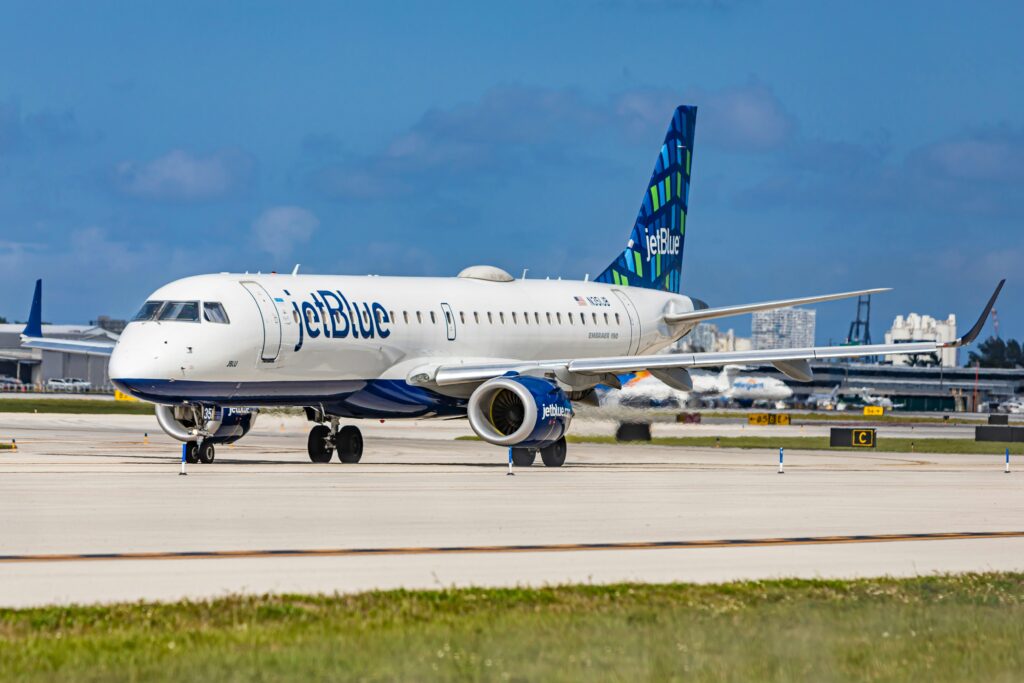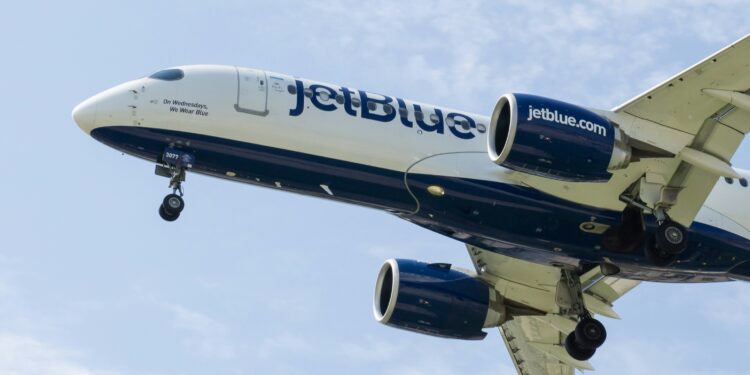JetBlue Airways Corporation (JBLU) announced its third-quarter 2024 financial results, showing progress in operational performance and cost management despite external challenges.
The airline reported operating revenue of $2.4 billion, a 0.5% year-over-year increase, alongside a GAAP net loss of $60 million, or $0.17 per share, and an adjusted net loss of $54 million, or $0.16 per share, when excluding special items. Meeting or exceeding all financial targets, JetBlue’s strategic actions helped balance strong demand and rising costs.
CHECK THIS OUT: Elon Musk’s Net Worth Jumps $30 Billion as Tesla Shares Surge 22%

JetForward Strategy Powers Operational Improvements and Customer Satisfaction
JetBlue CEO Joanna Geraghty attributed the positive results to the ongoing implementation of the JetForward strategy. “Our crewmembers’ efforts and enhanced operations delivered a double-digit boost in customer satisfaction, despite challenges like Hurricanes Helene and Milton,” she said.
JetBlue’s targeted capacity actions, designed to match supply and demand during off-peak travel, contributed to the airline’s competitiveness, particularly in the Latin American region, where capacity continues to improve.
Enhancing Premium Offerings with “EvenMore®”
As part of the JetForward initiative, JetBlue will enhance its popular “Even More Space” seats, rebranding them as EvenMore®. Beginning in mid-November, the upgraded seats will gain more prominence in JetBlue’s booking platform, making them accessible on the flight search results page.
JetBlue plans to roll out additional benefits for EvenMore® in 2025, aiming to appeal to premium travelers with extra legroom and new amenities. In addition to the seating upgrade, JetBlue is expanding its products with new lounges set to open at JFK and Boston Logan airports and has introduced a premium co-branded credit card to enhance the customer experience further. These moves align with JetBlue’s commitment to delivering “products and perks customers value.”
Financial Performance Highlights: Revenue Growth Amid Cost Control
JetBlue’s third-quarter capacity fell by 3.6% year-over-year, while operating expenses decreased by 4.2%, demonstrating the impact of cost management. The airline’s operating cost per available seat mile (CASM) saw a slight decrease of 0.7% year-over-year, with CASM excluding fuel and other specific costs rising by 4.8%.
JetBlue achieved a 4.3% increase in unit revenue due to robust demand, particularly during peak periods, and successful cost-saving initiatives. Marty St. George, JetBlue’s President, noted that the airline’s new offerings, capacity management, and competitive positioning have bolstered revenue, with initiatives like EvenMore® helping JetBlue capture premium demand in key regions.
Securing Financial Future with Capital, Sustainability Initiatives, and a 2025 Profitability Target
JetBlue secured $3.2 billion to support capital needs, retire debt, and stabilize cash flow through 2025. The airline also advanced its commitment to environmental sustainability, signing an agreement with World Fuel Services and Valero Energy to bring sustainable aviation fuel to New York in 2024, marking a significant step towards a lower-carbon footprint.
With third-quarter on-time performance improving by 12 points and a completion factor near 98%, JetBlue’s goal remains to return to profitability. St. George emphasized that growing unit revenue is critical for profitability as JetBlue heads into 2025, anticipating continued benefits from JetForward initiatives.
Optimism for revenue growth is backed by strong demand trends and new product introductions, reinforcing JetBlue’s position in a competitive market. Through enhanced products, cost discipline, and strategic network adjustments, JetBlue is well-positioned for long-term growth and sustainability in the dynamic airline industry.
READ ALSO: T-Mobile Posts 43% Net Income Growth, Fueled by 5G Demand and Coursera Tops Q3 Expectations, Cuts 2024 Revenue Outlook.






